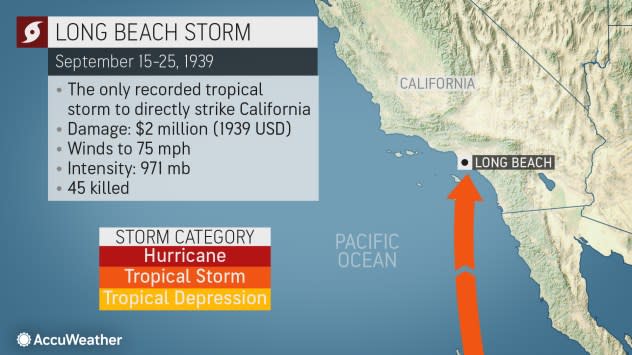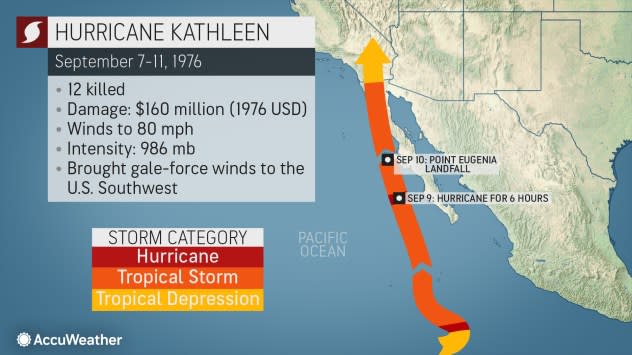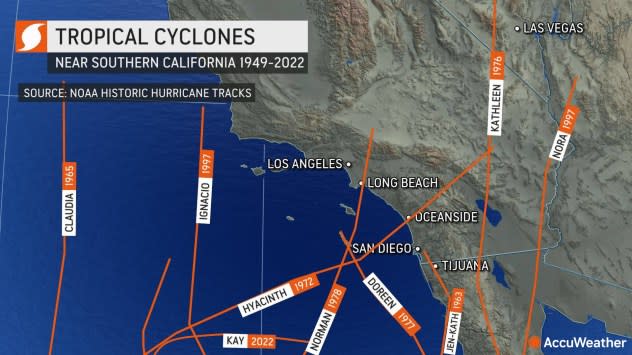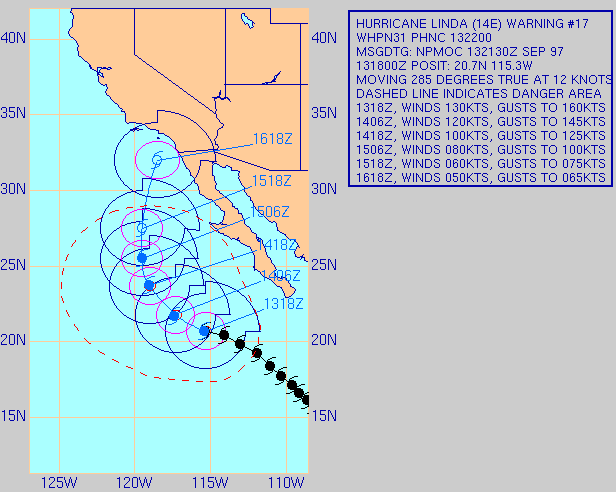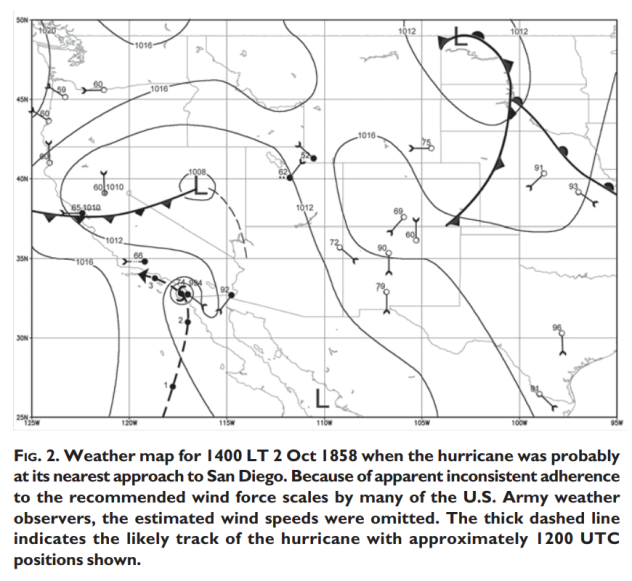California's hurricane history
Hurricane Hilary made landfall in Mexico's Baja California Peninsula on Aug. 20, 2023, and was tracked from San Diego to east of Fresno as a tropical storm. No tropical storm has officially made landfall in California since record-keeping began in 1949.
Weather impacts from storms that were once tropical in nature have affected the state in the past, but it's been a very long time since a tropical storm hit the state directly.
Just last year, Hurricane Kay was downgraded to a tropical storm as it performed a loop in the ocean off the Southern California coast. This was the first tropical storm to have come within 200 miles of Los Angeles since the year 2000. Tropical Storm Kay brought a year's worth of rain, flooding, mudslides and high winds to the area.
 |
Also known as "El Cordonazo," the Long Beach Tropical Storm in 1939 made landfall at Long Beach, California, unleashing deadly flooding. |
Ten years before official records began, the worst tropical storm to ever hit California, colloquially referred to as "El Cordonazo" or "The Lash of St. Francis," made landfall in Los Angeles in late September 1939. It wasn't at hurricane force when it hit the coast but was still strong enough to set rainfall records at the time -- almost 12 inches in some areas. Residents were so unprepared for tropical storms that the U.S. Weather Bureau, the precursor to the National Weather Service, created a new office for Southern California, which began operations the following year.
The record rainfall associated with a tropical cyclone in California is 14.76 inches, recorded on San Gorgonio Mountain, 80 miles east of Los Angeles, during Tropical Rainstorm Kathleen in 1976. Kathleen was a bona fide hurricane that made landfall in the Baja California Peninsula in Mexico, then it tracked into Southern California as a tropical rainstorm after losing some wind intensity.
 |
Other notable storms include Tropical Storm Jennifer-Katherine in 1963, which was a tropical depression when it tracked from Mexico over San Diego. It caused heavy rain across Southern California. Similarly, Hurricane Hyacinth in 1972 moved inland as a depression near San Diego and quickly dissipated after that.
 |
Tropical cyclone tracks approaching southern California since 1949. |
Later in 1978, Hurricane Norman made landfall on San Clementine Island, also as a tropical depression, before tracking over Long Beach, California, as an extratropical cyclone. Norman caused heavy rain across Central California.
In 1997, Hurricane Nora was officially tracked as a tropical storm in the easternmost part of California. The same year, Tropical Storm Ignacio took a path west of Santa Maria, California, as a tropical rainstorm.
Hurricane Rosa in 2018 soaked not only Baja California, but its reach extended all the way to Phoenix, where heavy rain not only put it in the history books for one of the wettest days on record for the city but also left cars stranded in the streets due to flooding.
In September 1997, the strongest tropical cyclone ever observed in the Eastern Pacific basin, Category 5 Hurricane Linda, was, at one time, projected to hit Southern California, albeit as a tropical storm.
 |
A U.S. Navy graphic shows the forecast of Hurricane Linda on Sept. 12, 1997 moving towards southern California as a tropical storm. |
Although no official watches or warnings were issued, the NWS office in Los Angeles discussed the possible impacts in the area in its state forecast discussion -- and asked the media not to overdramatize the storm. Linda later turned westward, and only large waves affected California.
Originally unknown to the broader meteorological community, a hurricane did make landfall in San Diego, over a century before such storms were tracked in any official way. At the time of the hurricane, San Diego County was tiny, with a population just shy of 4,500. Now, the county has an estimated population of 3.2 million. The damage then was likely confined to coastal areas, but heavy wind, rain and flooding were still felt by those living inland.
 |
While a direct track into Southern California from the sea is becoming less likely due to an eastward shift of the broadening center on Saturday, Hilary is still expected to cross into the state from Mexico as a tropical storm with tremendous rainfall and flooding potential.


